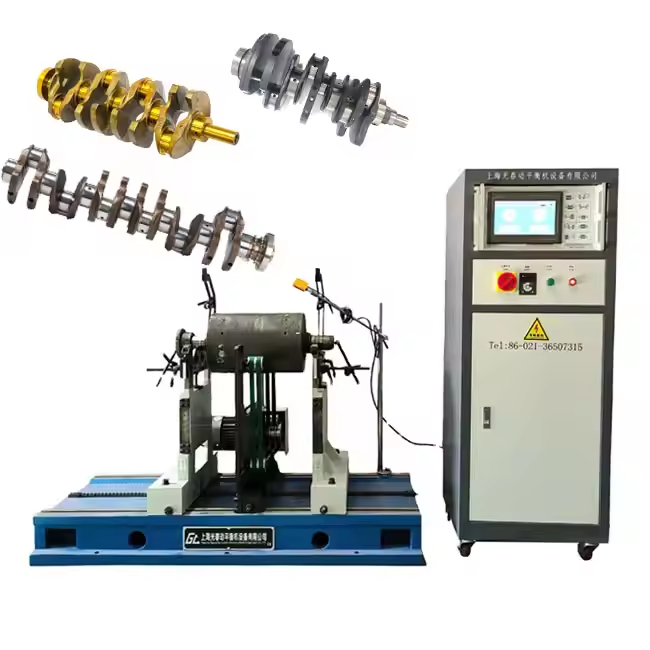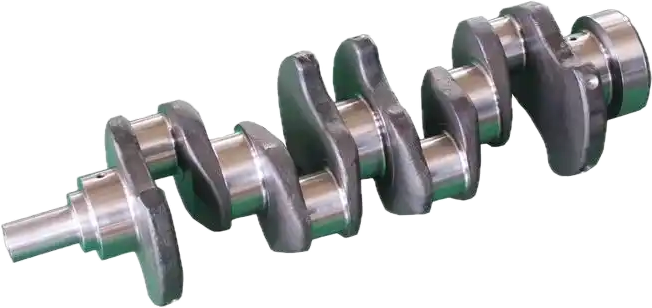Essential Practices for Optimal Crankshaft Balancing Performance
The precision and reliability of crankshaft balancing machines play a crucial role in automotive and industrial manufacturing. These sophisticated pieces of equipment require meticulous maintenance to ensure accurate measurements and consistent performance. Understanding proper maintenance procedures not only extends equipment lifespan but also guarantees precise balancing results that meet stringent industry standards.
Modern crankshaft balancing machines incorporate advanced sensors and measuring systems that demand regular attention. Whether you're operating a horizontal or vertical balancing system, implementing a comprehensive maintenance strategy is essential for maintaining calibration accuracy and preventing costly downtime. Let's explore the vital aspects of keeping these precision instruments in peak operating condition.
Preventive Maintenance Fundamentals
Daily Inspection Protocols
Establishing a robust daily inspection routine forms the foundation of effective maintenance for crankshaft balancing machines. Operators should begin each shift by checking drive belts for proper tension and signs of wear. Bearing surfaces require careful examination for any unusual sounds or vibrations that might indicate developing issues. Additionally, all safety guards and emergency stop mechanisms must be verified for proper operation.
Cleanliness plays a paramount role in maintaining accuracy. Operators should clean measuring sensors, support rollers, and work surfaces thoroughly before and after use. Any debris or metal particles can significantly impact balancing precision and potentially damage sensitive components. The machine's calibration reference points should also be wiped clean and protected from contamination.
Lubrication Management
Proper lubrication is critical for crankshaft balancing machines to function smoothly and accurately. All bearing points, drive mechanisms, and moving components require scheduled lubrication according to manufacturer specifications. Using the correct grade and type of lubricant is essential - synthetic oils often provide superior protection for high-speed components.
Maintenance teams should maintain detailed lubrication logs and implement a systematic greasing schedule. Over-lubrication can be as problematic as insufficient lubrication, potentially leading to seal damage or contamination of measuring systems. Regular monitoring of oil levels and quality helps prevent unexpected equipment failures.

Advanced Calibration Procedures
Measurement System Verification
Regular calibration of crankshaft balancing machines ensures continued accuracy and reliability. A comprehensive calibration process includes verifying sensor alignment, checking measurement system linearity, and confirming the accuracy of balance calculations. Calibration should be performed using certified master rotors specifically designed for your equipment.
Modern balancing machines often feature self-diagnostic capabilities that help identify drift in measuring systems. However, manual verification remains essential. Maintaining detailed calibration records helps track long-term performance trends and anticipate potential issues before they affect production quality.
Software and Electronics Maintenance
The electronic systems in crankshaft balancing machines require regular updates and maintenance. Software patches often include important improvements for measurement algorithms and system stability. Backing up configuration data and calibration settings provides essential protection against system failures or data corruption.
Regular testing of all electronic interfaces, including emergency stops and safety interlocks, ensures reliable operation. Maintenance teams should verify proper function of display screens, input devices, and network connections. Environmental controls for electronic cabinets, including air filters and cooling systems, require periodic inspection and cleaning.
Component Lifecycle Management
Wear Part Replacement Strategies
Developing a proactive approach to wear part replacement helps prevent unexpected failures in crankshaft balancing machines. Critical components like support bearings, drive belts, and brake systems have predictable service lives. Creating a detailed inventory of spare parts and implementing scheduled replacement intervals minimizes production disruptions.
Monitoring component performance through regular inspections helps identify early signs of wear. Vibration analysis and temperature monitoring can provide valuable insights into bearing condition. Maintaining detailed service records for each major component helps optimize replacement schedules and budget planning.
Upgrade and Modernization Planning
Technology in crankshaft balancing machines continues to evolve, offering opportunities for performance improvements through strategic upgrades. Evaluating available modernization options helps maintain competitive capabilities while extending equipment life. Control system upgrades often provide enhanced measurement accuracy and improved operator interfaces.
Planning for future upgrades requires careful consideration of compatibility and return on investment. Working closely with equipment manufacturers ensures successful implementation of new features while maintaining system reliability. Regular assessment of machine capabilities against current industry requirements helps identify optimal timing for major upgrades.
Frequently Asked Questions
How often should crankshaft balancing machines undergo complete calibration?
Professional calibration should be performed at least quarterly, with additional verification checks monthly or after any significant maintenance work. High-volume operations may require more frequent calibration to maintain optimal accuracy.
What are the signs that indicate immediate maintenance is needed?
Key indicators include unusual vibrations, inconsistent measurements, unexpected error messages, unusual noises during operation, or visible wear on support bearings. Any of these symptoms should trigger immediate inspection and maintenance response.
How can operators maximize the lifespan of balancing machine components?
Operators can extend component life by following proper warm-up procedures, maintaining clean working environments, adhering to specified load limits, and promptly reporting any unusual machine behavior. Regular training in proper operation techniques also helps prevent premature wear.
What documentation should be maintained for maintenance compliance?
Maintain comprehensive records of all calibrations, maintenance activities, component replacements, and software updates. These records should include dates, technician information, work performed, and any relevant measurements or test results.




